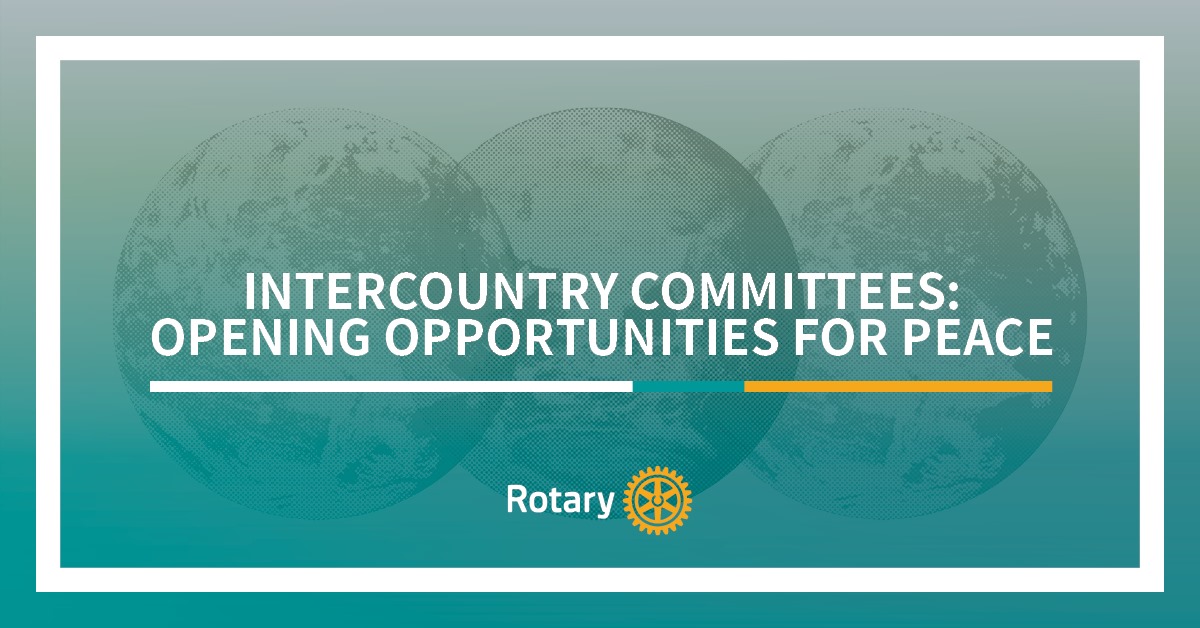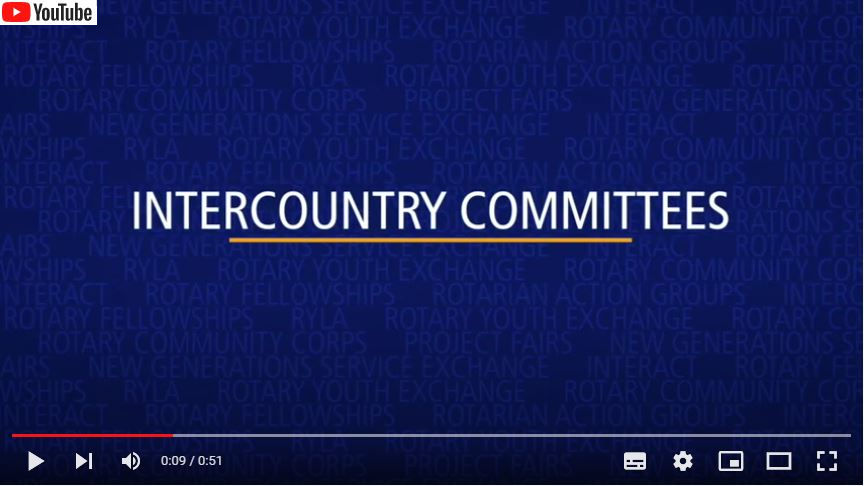
Rotary Inter-Country Committees (ICC)
« If the Inter-Country Committees did not exist, they would have to be invented »
Frank Devlyn, President of Rotary International 2000-2001 (Lille, France - March 25, 2001)
Mission
Beyond borders: opening Opportunities for Peace.
The Rotary Inter-Country Committees (ICC) form an international network to promote peace and service projects around the world.
Created after World War II as part of Rotary International, the Inter-Country Committees rely on bilateral relations between Rotarians of different countries to provide greater opportunities for global understanding, friendship and the promotion of world peace.
The Inter-Country Committees promote relationships between two or more Rotary international districts (two or more countries) to increase fellowship and intercultural understanding among the people of various nations, foster stronger ties between Rotary members, clubs, and districts from different countries, and establish networks across borders, continents, and oceans.

Rotary and Inter-Country Committees
«In 1950, a handful of German and French Rotarians gathered in Strasbourg. They were marked by a terrible war. Together they made a gamble to emerge from tragedy through intelligence. They created the first committee with a single goal: reconciliation between their two countries.
Since that date ICCs has helped Rotarians to create a climate of friendship with clubs and districts from different cultures.
The Inter-Country Committees with their simple and flexible structure are expanding Rotary's service and carried out large-scale projects in the strategic areas of focus, particularly in promoting peace.
They help increase Rotary membership development by giving value of interest for young people and help setting new Rotary and Rotaract clubs.
Consistent with the RI Strategic plan, ICCs provide significant support to all programs of Rotary International and of the Rotary Foundation.
Today, ICCs have been established in many parts of the world and there are an estimated 400 ICCs relationships and their presence within Rotary International is a vital force in reinforcing its historic contribution to world peace.
Inter-Country Committees, in a very real sense, are the backbone of international policy in Rotary. Why? Because an Inter-Country Committee permits people, in two or more countries it links, to get to know each other well.
The ICCs provide assistance in finding partners for interesting club projects, in other countries, developing the network of twins clubs.
Inter-Country Committees provide an additional means for Rotary and Rotaract clubs to fulfill the responsibilities of the fourth Avenue of Service: international understanding, goodwill and peace».
Cyril NOIRTIN, Chairman Inter-Country Committees Executive Council 2020-2022 (ICC website, July 1, 2020)
For information on Rotary:

Rotary International website
Documentation on the Rotary Inter-Country Committees (ICC):
| ICC Presentation (YouTube) | ICC’s contribution to Rotary’s priorities |
Activities of the Rotary Inter-Country Committees
The Rotary Code of Policy (codification of the general and permanent policies of Rotary International) recommends these activities for the ICC participants: visiting each other’s countries and homes, strengthening friendships and projects so formed by encouraging clubs and districts to connect with clubs and districts in other countries, and contributing to world peace.
Inter-Country Committees may also:
- exchange best practices for sponsoring new clubs
- develop a sister or twin club relationship between clubs in participating countries
- conduct Friendship Exchanges between the two countries
- initiate or carry out International Service projects
- initiate or carry out Vocational Service projects
While only districts may form and join Inter-Country Committees, individual Rotarians, their partners, Rotaractors, and Rotary clubs and Rotaract clubs may participate in their activities.
Historical notes on the Rotary Inter-Country Committees
(dedicated page)
Rotary Inter-Country Committees organization structure
(dedicated page)

Documents:

